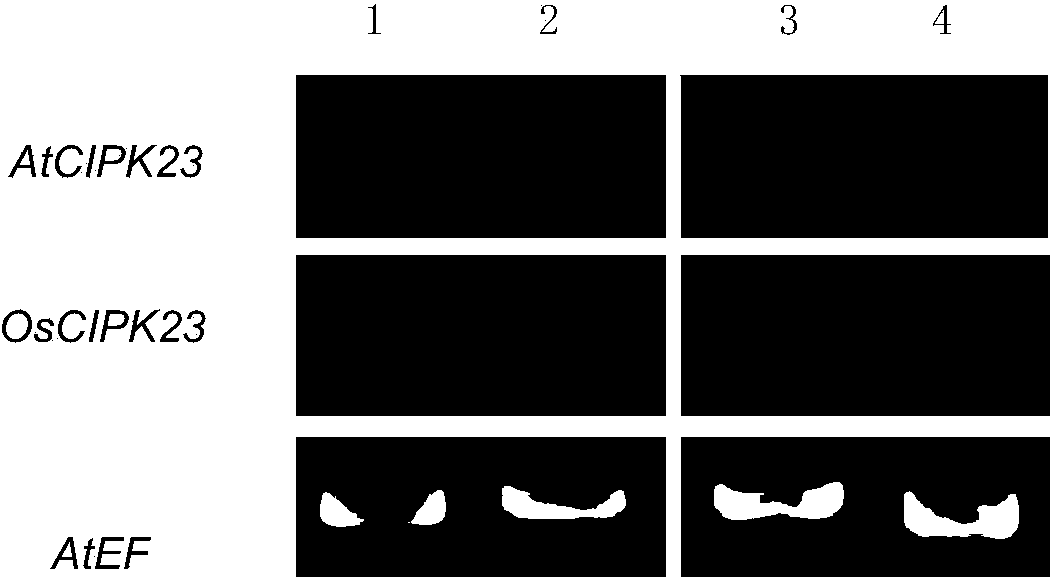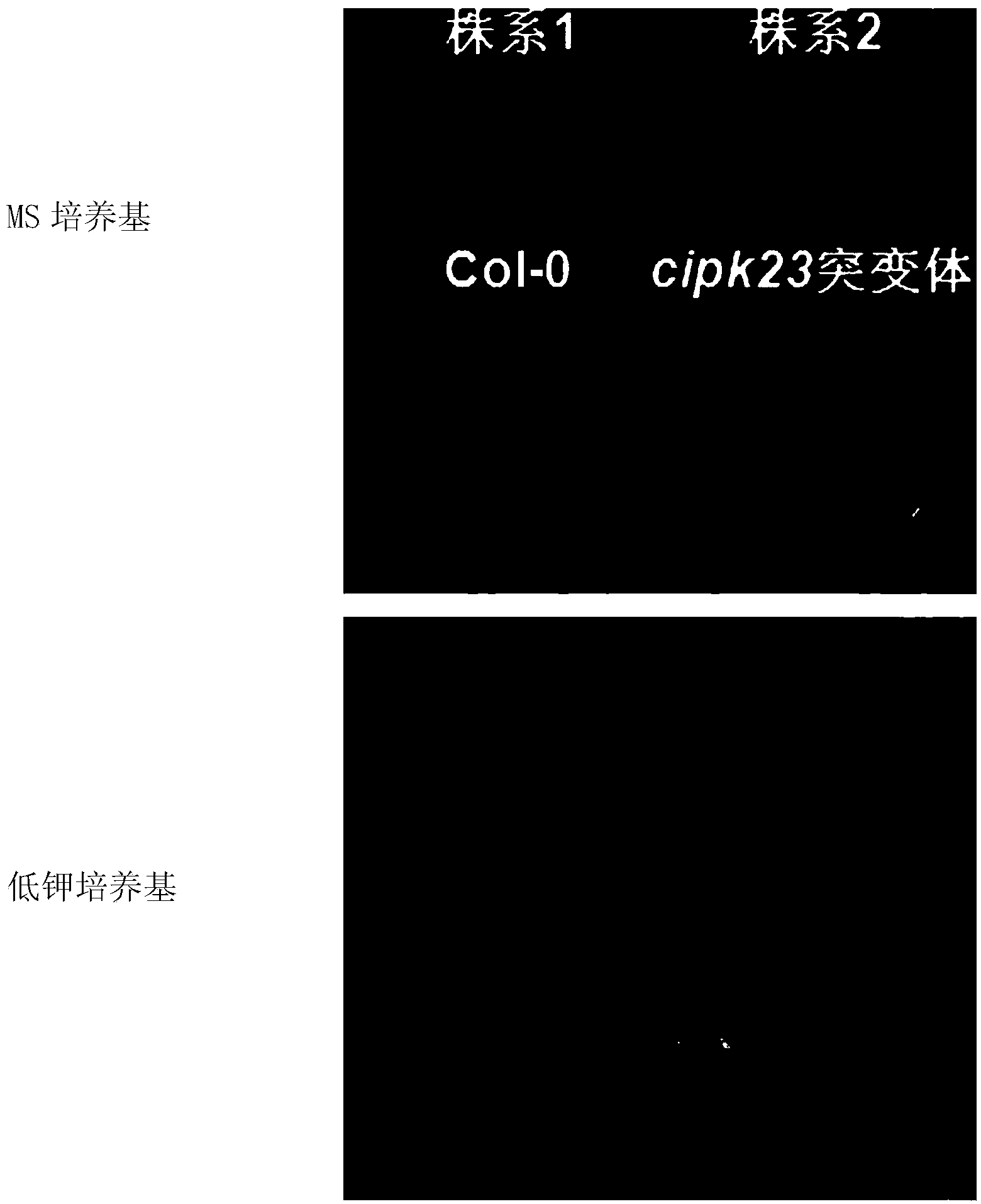Application of OsCIPK23 protein to cultivation of low-potassium stress-resistant plant
A low-potassium, plant-resistant technology, applied in the fields of application, plant products, plant genetic improvement, etc., can solve problems such as high price and potassium environmental hazards
- Summary
- Abstract
- Description
- Claims
- Application Information
AI Technical Summary
Problems solved by technology
Method used
Image
Examples
Embodiment 1
[0037] Embodiment 1, the acquisition of OsCIPK23 protein and its coding gene
[0038] Obtain a DNA sequence (derived from the rice variety "Nipponbare") on the TIGR website (http: / / rice.plantbiology.msu.edu), which encodes the protein shown in Sequence 1 of the Sequence Listing.
[0039] The protein shown in Sequence 1 of the Sequence Listing was named OsCIPK23 protein (composed of 450 amino acid residues). The gene encoding OsCIPK23 protein is named OsCIPK23 gene, its genome sequence has 14 exons and 13 introns, and the open reading frame in its cDNA sequence is shown in sequence 2 of the sequence listing.
Embodiment 2
[0040] Embodiment 2, detection of transgenic Arabidopsis plant phenotype
[0041] 1. Construction of overexpression vector
[0042] 1. Synthesize the double-stranded DNA molecule shown in sequence 2 of the sequence listing.
[0043] 2. Using the double-stranded DNA molecule synthesized in step 1 as a template, perform PCR amplification with a primer pair composed of OsCIPK23-UN1301F and OsCIPK23-UN1301R to obtain a PCR amplification product.
[0044] OsCIPK23-UN1301F: 5'–TT GGATCC ATGAGCGTGTCGGGCGGGA-3';
[0045] OsCIPK23-UN1301R: 5'–TT GGTACC TCACGGTGACCTCCGATGCT-3'.
[0046] 3. Digest the PCR amplified product in step 2 with restriction endonucleases Bam HI and Kpn I, and recover the digested product.
[0047] 4. Digest the 1301-Ubiq plasmid with restriction endonucleases Bam HI and Kpn I to recover the vector backbone (about 11800bp).
[0048] 5. Ligate the digested product of step 3 with the vector backbone of step 4 to obtain a recombinant plasmid. According to t...
Embodiment 3
[0081] Embodiment 3, transgenic rice plant phenotype detection
[0082] 1. RNAi vector construction
[0083] 1. Synthesize the double-stranded DNA molecule shown in sequence 2 of the sequence listing.
[0084] 2. Using the double-stranded DNA molecule synthesized in step 1 as a template, perform PCR amplification with a primer pair composed of OsCIPK23-pTCK303F and OsCIPK23-pTCK303R to obtain a PCR amplification product.
[0085] OsCIPK23-pTCK303F: 5'-GG GGTACCACTAGT ACGCTGTCGATTACTGTCA-3';
[0086] OsCIPK23-pTCK303R: 5'-CG GGATCCGAGCTC TTGGAGGCTGATATCCC-3'.
[0087] 3. The PCR amplified product of step 2 was double-digested with restriction enzymes SpeI and SacI, and the digested product was recovered.
[0088] 4. Digest the pTCK303 plasmid with restriction enzymes SpeI and SacI, and recover the vector backbone (about 11800bp).
[0089] 5. Ligate the digested product of step 3 with the vector backbone of step 4 to obtain a recombinant plasmid.
[0090] 6. Double-dige...
PUM
 Login to View More
Login to View More Abstract
Description
Claims
Application Information
 Login to View More
Login to View More - Generate Ideas
- Intellectual Property
- Life Sciences
- Materials
- Tech Scout
- Unparalleled Data Quality
- Higher Quality Content
- 60% Fewer Hallucinations
Browse by: Latest US Patents, China's latest patents, Technical Efficacy Thesaurus, Application Domain, Technology Topic, Popular Technical Reports.
© 2025 PatSnap. All rights reserved.Legal|Privacy policy|Modern Slavery Act Transparency Statement|Sitemap|About US| Contact US: help@patsnap.com



